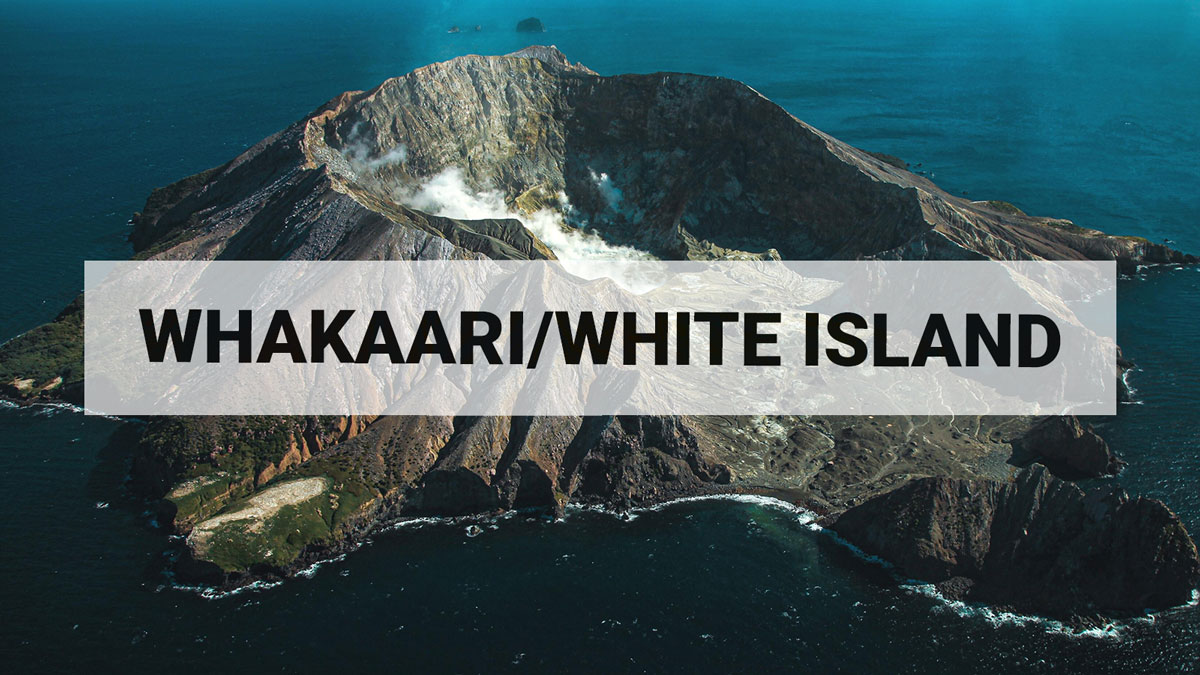
Whakaari/White Island eruption: Update #18
Whakaari/White Island remains in an elevated state of unrest. Very hot gas and steam continue to discharge from the December 9th vents. Further eruptions over 24 hours on any given day are very unlikely in the next four weeks. The Volcanic Alert Level remains at Level 2. The Aviation Colour Code changes to Yellow as ash only rarely gets emitted at the vent.
No further eruptive activity has been observed since the December 9th eruption. Strong emissions of steam and gases continue from the December 9th vent area which remains very hot, causing a glow in this area that is seen on our near infrared cameras. The level of volcanic tremor has remained low since 14/12/2019. This, along with SO2 emission rates within normal range, suggest that no significant amount of magma has been on the move since making it to the surface shortly after the eruption.
Occasionally small amounts of ash can be emitted from the active vent due to erosion. This has been observed twice on December 23rd and December 26th. Neither was significant enough to carry ash beyond the island.
Satellite data shows continued land movement of the back crater wall west of the 1914 landslide. We continue to monitor the rate of movement and are assessing the likelihood of future landslides into the vent area.
This morning our team’s experts estimated the likelihood of another eruption occurring and affecting the area beyond the crater lake edge between now and midday Monday February 3rd. This expert elicitation indicates another eruption being very unlikely (1 - 2 %) for any 24-hour period through to midday Monday February 3rd. Consequently, the distances for GNS Science staff-access zones have been reduced but remain too large for GNS Science staff to access the island for standard operations. The expert elicitation will be reviewed again on Monday February 3rd, or sooner if the level of activity changes.
An explosive eruption from the hot gas vent area remains possible and could occur with no precursory activity, especially if there is a collapse of unstable material around one of the vents, or if the gas emission decreases markedly, allowing water to enter the hot gas vent. Sudden steam/gas eruptions from other active vents are also possible.
Should any explosive activity produce an ash cloud, the likelihood of ash affecting the mainland in the next week remains low.
All our monitoring equipment on the island is operating. We are working to reinstate the Whakaari White Island webcams into the GeoNet website and will advise via GeoNet facebook and twitter when these are available.
The Volcanic Alert Level remains at Level 2.
The Aviation Colour Code was lowered to Yellow.
Volcanic Alert Level 2 indicates moderate to heightened unrest with potential for eruption hazards including unpredictable and life-threatening steam driven eruptions.
The Volcanic Alert Level reflects the current level of volcanic activity and is not a forecast of future activity.
GNS Science and our National Geohazards Monitoring Centre continue to closely monitor Whakaari/White Island for further signs of activity. We are providing updates on the volcanic activity and estimates of eruption likelihood as required to other agencies.
Enquiries related to the emergency response and recovery should be directed to National Emergency Management Agency (NEMA).
Further updates will be provided as the situation evolves.
Yannik Behr Duty Volcanologist
Media Contact: 021 574 541 or media@gns.cri.nz